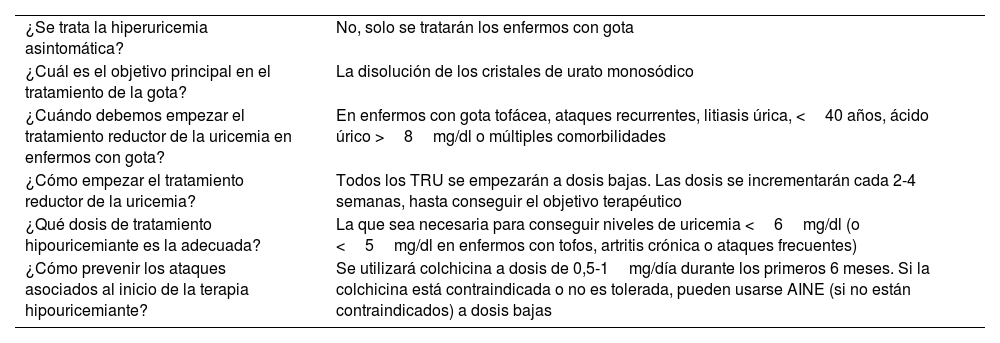La gota es una enfermedad provocada por el depósito de cristales de urato monosódico. Su presentación clínica como una artritis aguda autolimitada y la creencia de que es una enfermedad banal y autoinfligida han provocado que su manejo sea deficitario. A pesar de los avances en el conocimiento de la enfermedad y la sencillez del manejo, no más del 30% de los enfermos están bien tratados. En España la gota afecta al 2,5% de la población y su incidencia está en aumento.
En el siguiente artículo repasaremos la patogenia de la gota y la hiperuricemia, destacando el mayor peso de la genética y la función renal sobre la dieta. Analizaremos las consecuencias del depósito de los cristales. La gota, además de su presentación articular y de su afectación renal, ha demostrado ser un factor de riesgo cardiovascular independiente.
El tratamiento hipouricemiante es el más importante, ya que es el que permite la disolución de los cristales y la curación de la enfermedad. Para ello es necesario conseguir de forma sostenida niveles de uricemia inferiores a 6mg/dl. Revisaremos también el tratamiento preventivo y de los ataques, así como el papel de la educación de los enfermos tanto a nivel de hábitos higienicodietéticos como de adherencia al tratamiento farmacológico.
Gout is a disease caused by the chronic deposition of monosodium urate crystals. Its clinical presentation as an acute, self-limiting arthritis and the belief that it is a banal, self-inflicted disease have led to its poor management. Despite advances in the knowledge of the disease and the simplicity of its management, no more than 30% of patients are well treated. In Spain, the prevalence of gout is 2.5% and its incidence is increasing.
In the following article we will review the pathogenesis of gout and hyperuricaemia, highlighting the greater weight of genetics and renal function over diet. We will look at the consequences of crystal deposition. Gout, in addition to its joint presentation and renal involvement, has been shown to be an independent cardiovascular risk factor.
Hypouricemic therapy is the most important treatment, as it is the one that dissolves the crystals and cures the disease. This requires the sustained achievement of uricemia levels below 6mg/dl. We will also review preventive and flares treatment, as well as the role of patient education in terms of both lifestyle and dietary habits and adherence to pharmacological treatment.
Article
Diríjase al área privada de socios de la web de la SEMERGEN, (https://www.semergen.es/index.php?seccion=biblioteca&subSeccion=revistaSEMERGEN ) y autentifíquese.








